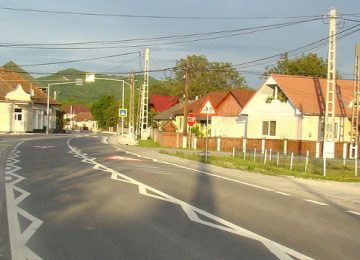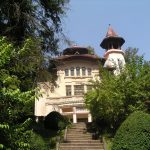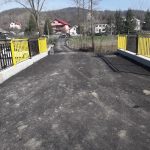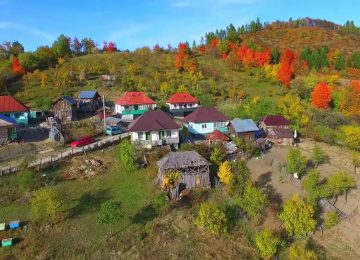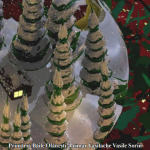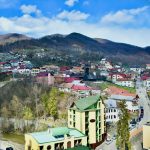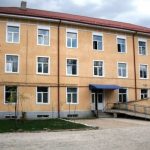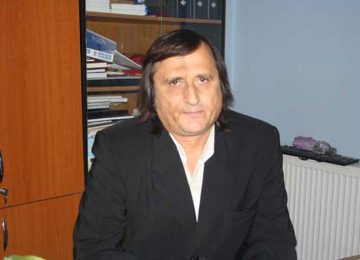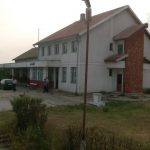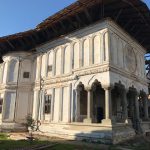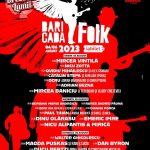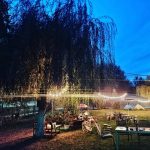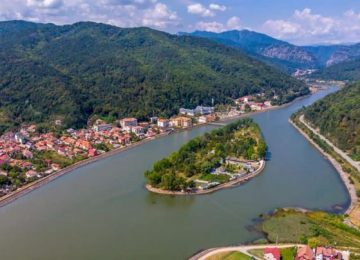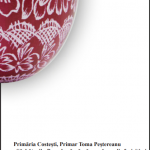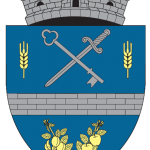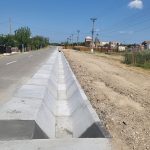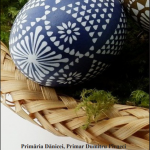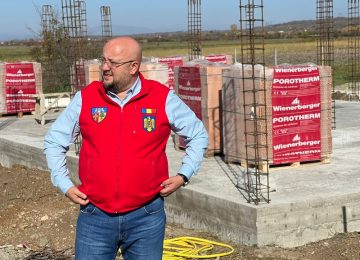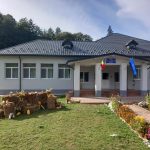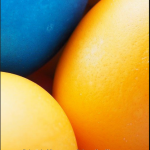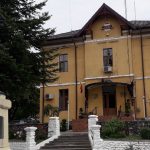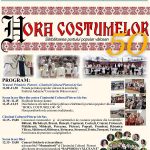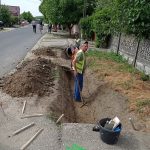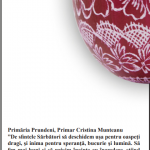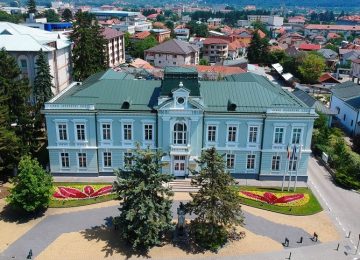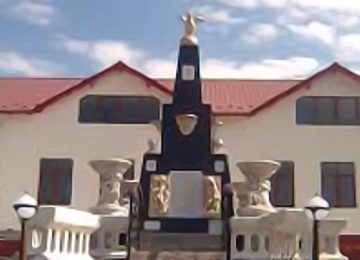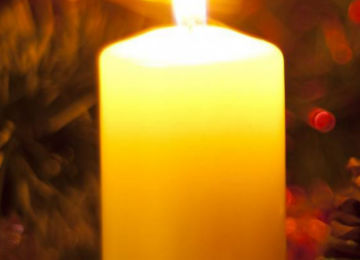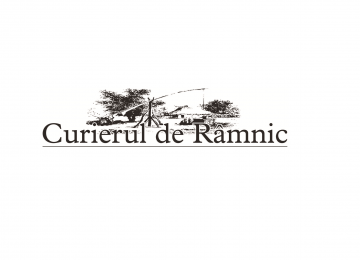Tudor Vlădescu, reporting from Singapore
Last year I chanced to be invited at the opening of a watercolour and oil painting exhibition in Bucharest. The overarching theme was architectural features of buildings that have been demolished. About the same time I was invited at a similar event, this time a collection of half a century old photos taken in the former Uranus neighbourhood, now occupied by the huge House of the People. Those who took the floor on both occasions spoke only of the loss incurred by the disappearance of heritage buildings and underlined the fast-paced rhythm of everyday life that disavows a contemplative attitude towards the remnant ones. In other words, everybody sounded the alarm over the psycho-aesthetic crises we are all in nowadays. Nobody offered any solution, be it about a revival of the architectural style of times past, neither about a campaign to include the surviving one hundred plus years old buildings in touristic circuits or community projects. Summing it up, an obituary had been written.
On the way to Singapore I landed in Warsaw, where entire Middle Age neighbourhoods were rebuilt after old photos and drawings once they had been destroyed in World War Two. That was a functional and brand new heritage, retaining only the surface, but none of the original building materials. In Singapore, the neighbourhood I live in has been completely rebuilt in the seventies. That includes the Hindu temple and Saint Andrew’s Secondary School, the only buildings to retain their original location. The attap-thatched bamboo houses that were built on stilts as a protection against floods had all been replaced by HDB houses and condominiums. A writer that returned home after living in the UK for a while decided to publish memoirs on the lifestyle in the area before all these changes occurred. Nostalgic? Sure! Without spelling it down, Josephine Chia offered a solution to improve our fast-paced existential issues of today by means of reviving a life philosophy that was common then: a slowdown of all engines that would make space for moments of contemplation that rarely come by naturally nowadays.
Her books about the kampong life in Potong Pasir, which is now close to the city center, but was a proper village in the seventies, contain stories that sound very familiar to the ones told to me by my mother. At that time, she was living in a Romanian village which, by contrast, is still a village. Both of them lived between fences that did not stop neighbours from visiting, both had considered all of the many animals around them as pets, had to contend themselves with little material possessions, used to read at the dim light of a lamp or of one lightbulb per household and so on. However, at the book launch events, she stressed that although the place has been transformed beyond all recognition of the former village, the need for a slow-paced existence, for communication and affection are the same, and all of us are free to follow them in a personal way, yet keeping the kampong spirit alive.
The comparison between Potong Pasir and Mateești is beset by two conditions: the 1970s and the point of view of a girl about to become a teenager. Singapore was one of the free ports administered by the British Empire from early 1800s to the childhood years of Josephine Chia and my mother. The regulations concerning urban buildings were therefore very clear, especially for the central area. For instance, the shophouses had to reserve a five foot passage way all along the street. That was meant to allow everybody to take shelter when it was raining or it was scorching hot. In Mateești there were also places meant as shelters for passer-by people, but they were built by thoughtful landlords usually around a water well along the road. By the end of the century almost all were either abandoned or destroyed.
Rules and regulations are not customarily associated with heritage. As a matter of fact, they are antonymous, especially if we accept heritage as an object or phenomenon that pertains to art and represents the common sense, zest for life and upholds the freedom of the ancestors. On the other hand, laws and the like ask each individual to sacrifice a bit of the individual freedom for the sake of common good within a community. The old British regulations became heritage once the were kept in the blueprints of the urban development projects after 1965, the year of Singapore’s independence. Since then, public housing was represented by HDB buildings, whereas condominiums were privately owned. Singaporean citizens only had access to the latter, and buying them was eased by heavy subsidies from the government. These building have a signature void deck where one may find small shops, restaurants or even kindergartens, but remain in most cases open passage ways where table and chairs may be found occasionally. These buildings were inspired by Roosevelt’s New Deal public housing projects and by Eisenhawer’s Housing Act. Although the British had initiated a housing project after World War One, it lacked breath and was restricted to social cases. Later on the HDBs, an acronym for the Housing Development Board, became good deals for the middle class, whereas the condominiums, which are gated communities with their own parking lots and swimming pools, and the landed properties, occupied by less than a quarter of the population, were much more expensive. The Hong Kong public housing projects are much bigger, with tens of storeys and lobbies, but they all lack the void decks that make the Singapore ones unique.
An old law of cultural anthropology states that comparisons between similar phenomena from different cultural spaces should better be avoided. It fits like a glove the uncanny resemblance of the public housing projects of the socialist East European states and the HDBs. Although the fundamental principle is the same, namely the relocation of rural or marginally urban workers at a time of fast-paced industrialization, the Singaporean project retained elements of architecture that facilitate a lifestyle that is closer to the rural lifestyle. This also eased the transition period. However, an HDB that was built on stilts and offered open spaces for community life and events offered much more comfort that the bedroom matchbox district of socialist societies. Also, the HDBs were always close to hawker centres, much like the old kampongs. Those collections of small family-owned stalls survived even the fast-food invasion of the 1980s, one reason being that they were also subsidized.
There is a list of heritage buildings in Singapore, and the owners are forbidden to tear them down, alter them significantly or neglect them. The old buildings that did not make it on the list are waiting to be demolished. Ten years ago, when I moved to Potong Pasir, on one side of the street I lived on were two colonial era British houses, whereas on the other two private condominiums were being built. As almost all buildings in Singapore are surrounded by vegetation, the contrast was not obvious from street level, but a moment of evaluation showed that two families were disproportionately favoured compared to fifty or more on the other side. A couple of years ago the two families vacated the colonial houses, which were under long-term lease, as there is no such thing as ownership for perpetuity in Singapore. One of the houses, a wing for the owners and a kitchen annex, appears in one of the photos from Josephine Chia’s books. Obsolete but charming, speaking of a time when time flowed graciously, the photo was taken in a place that was called Atas Bukit at that time. No matter how many people that live in the neighbourhood I asked, nobody recalled the name. Those who knew it seem to have gone. The name might be lost, but the memory of a lifestyle lingers on. And it teaches us how to take a sniff of the mango and palms born by the wind at twilight and how to listen to the sound of birds and insects that fade away in the distance at nightfall.
Tudor Vlădescu is our correspondent in Singapore since January 15th, 2020.

